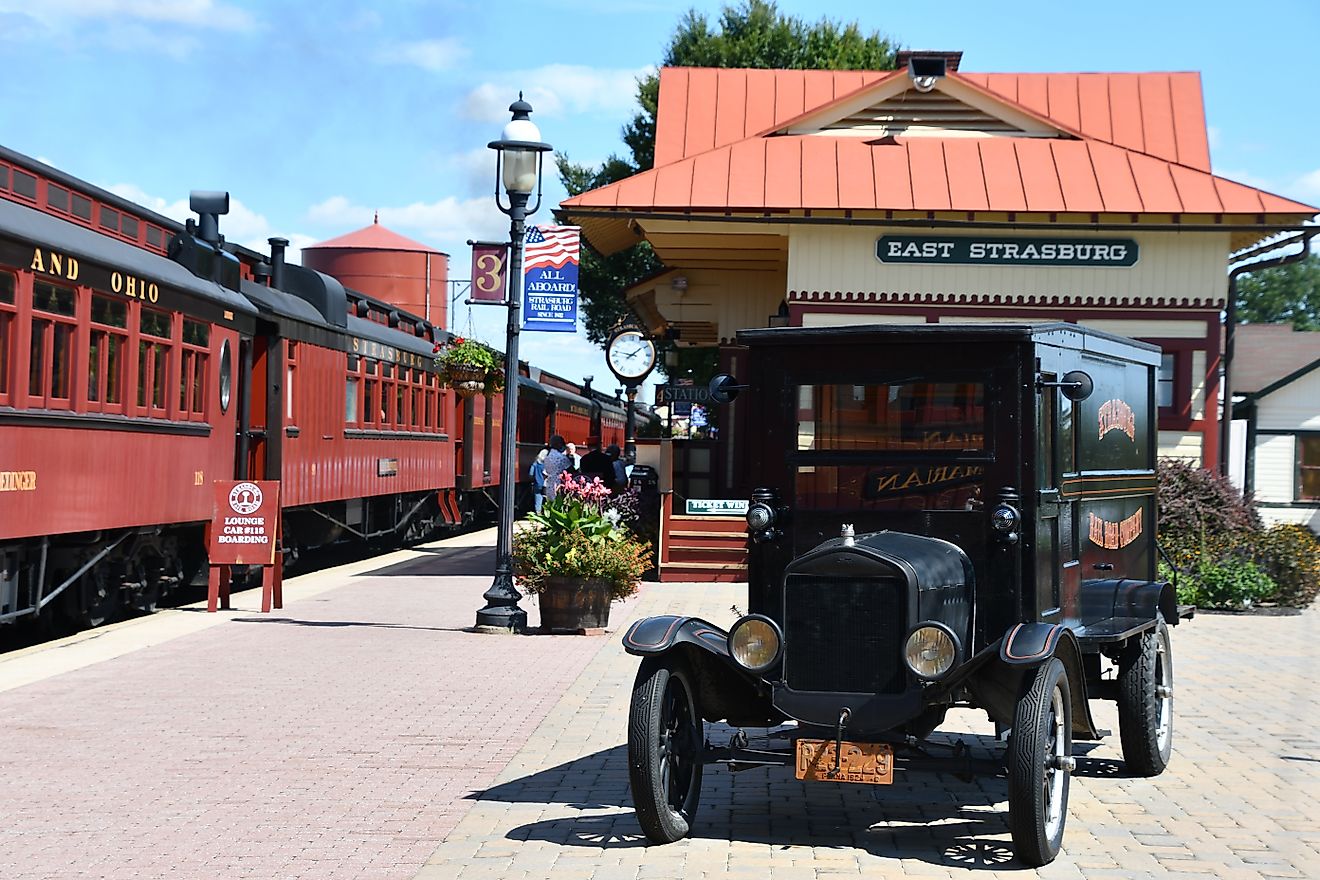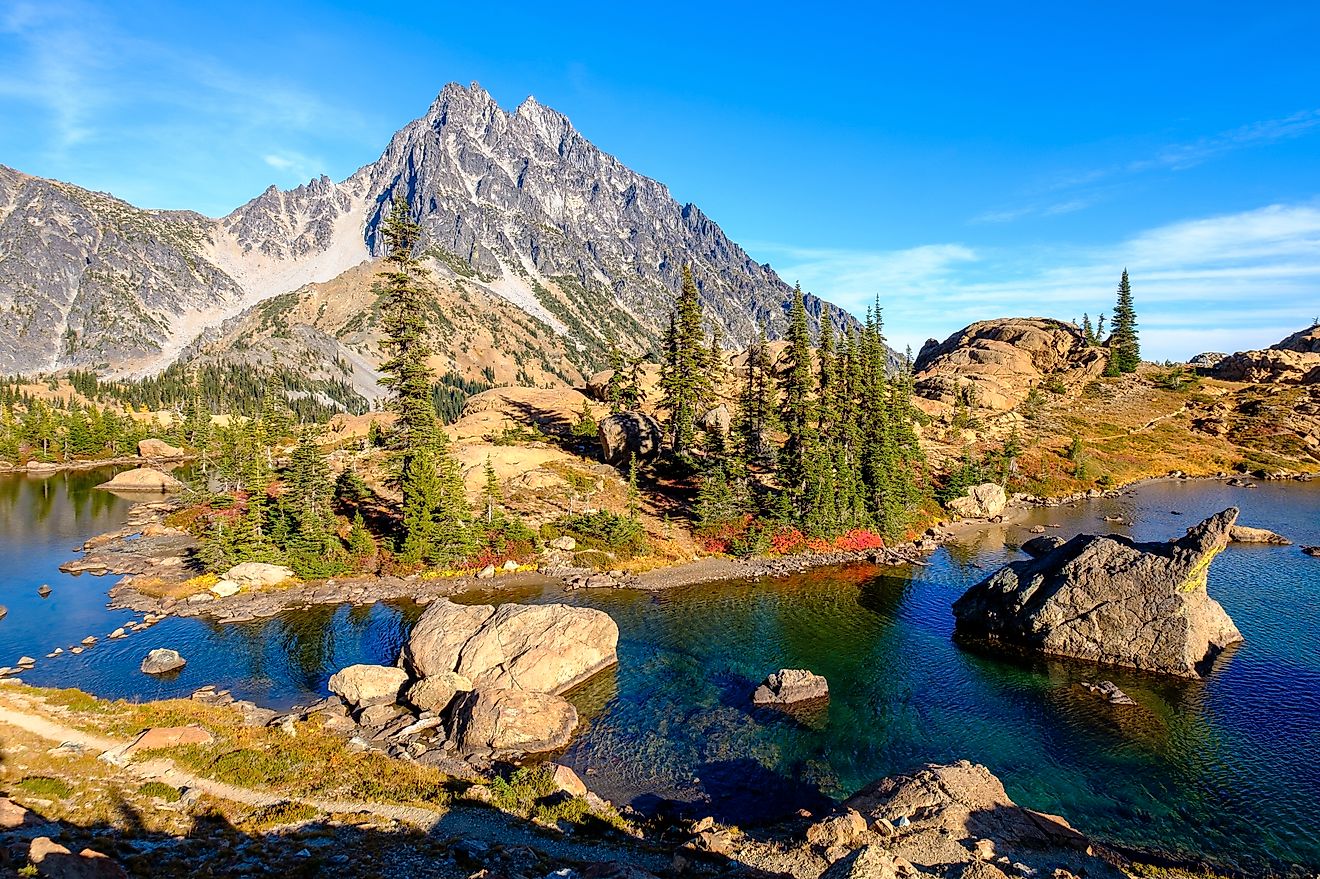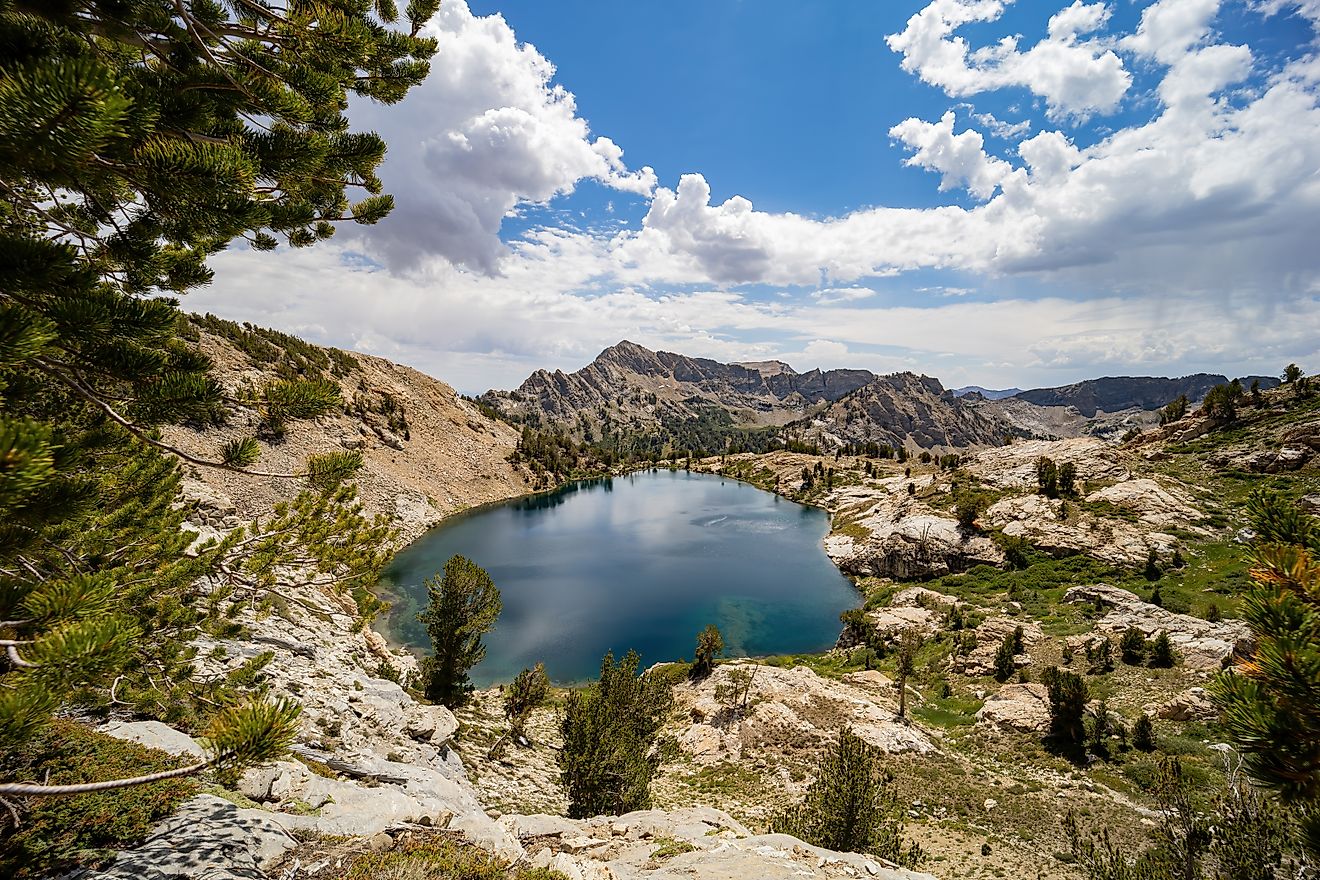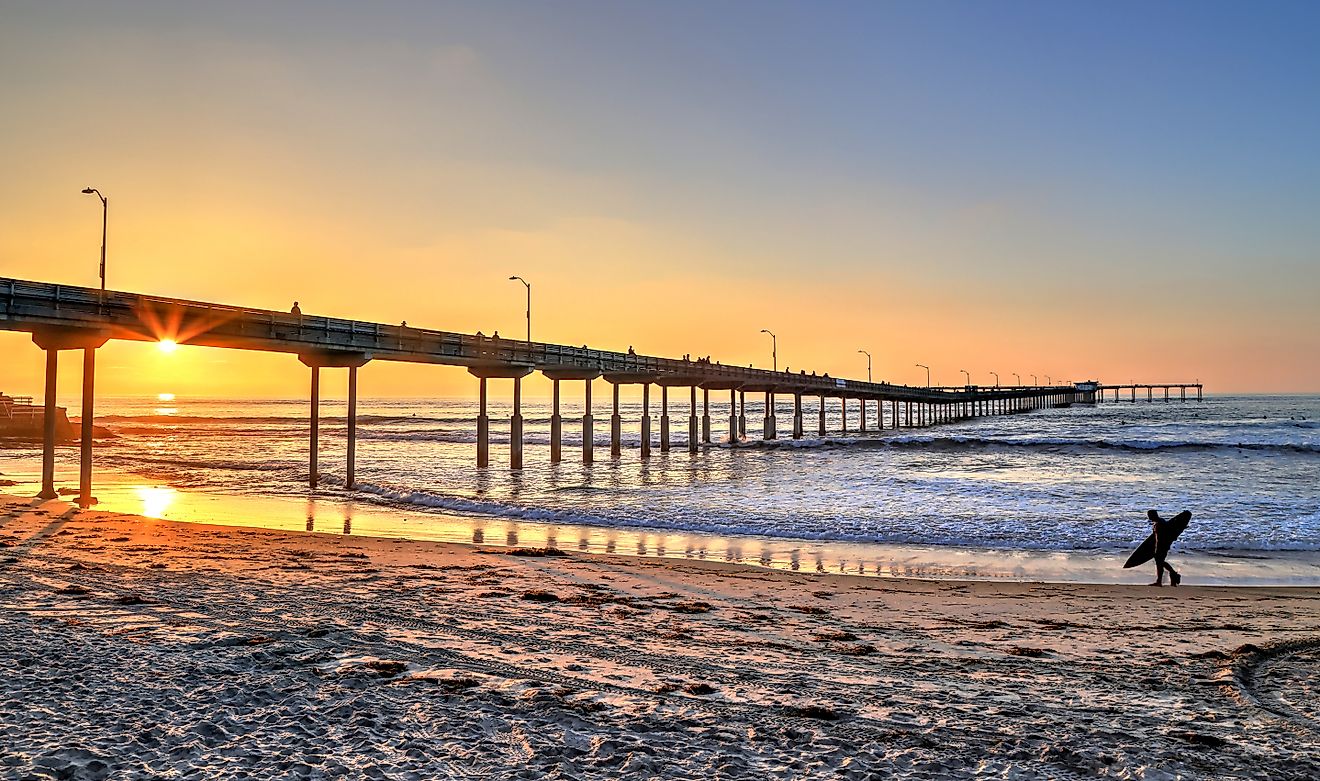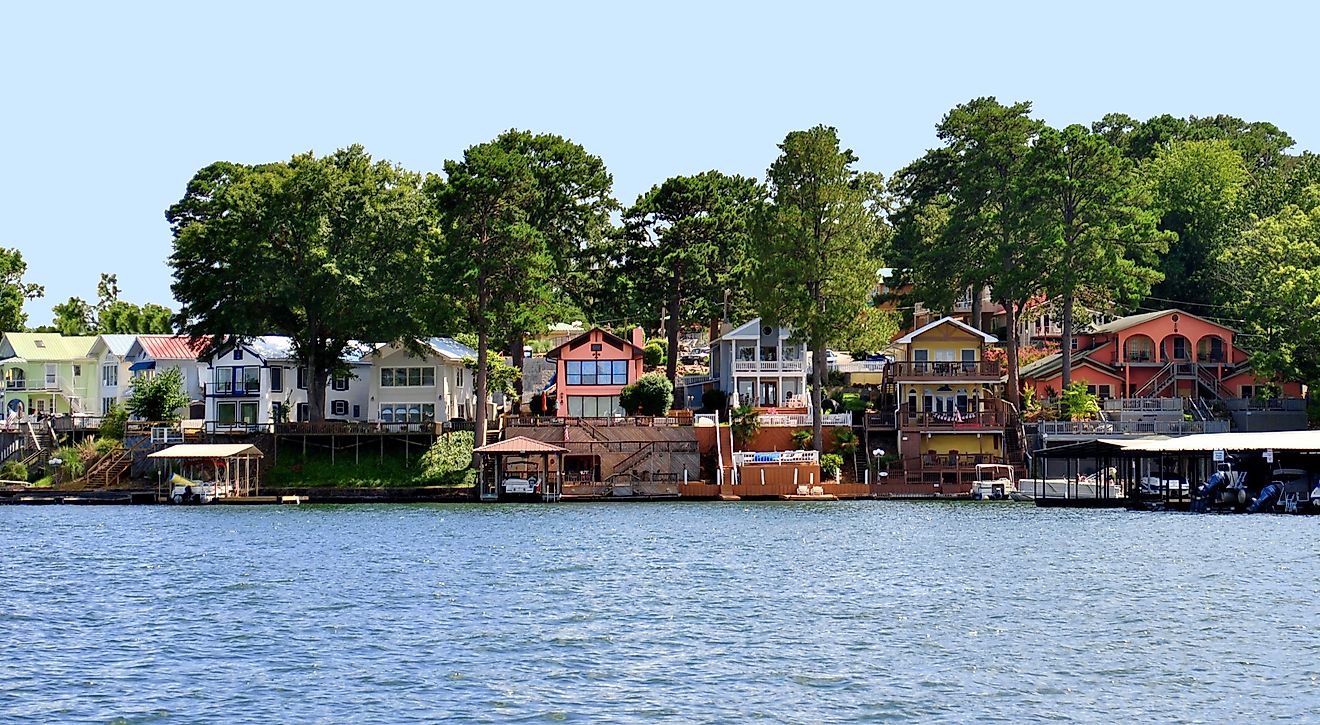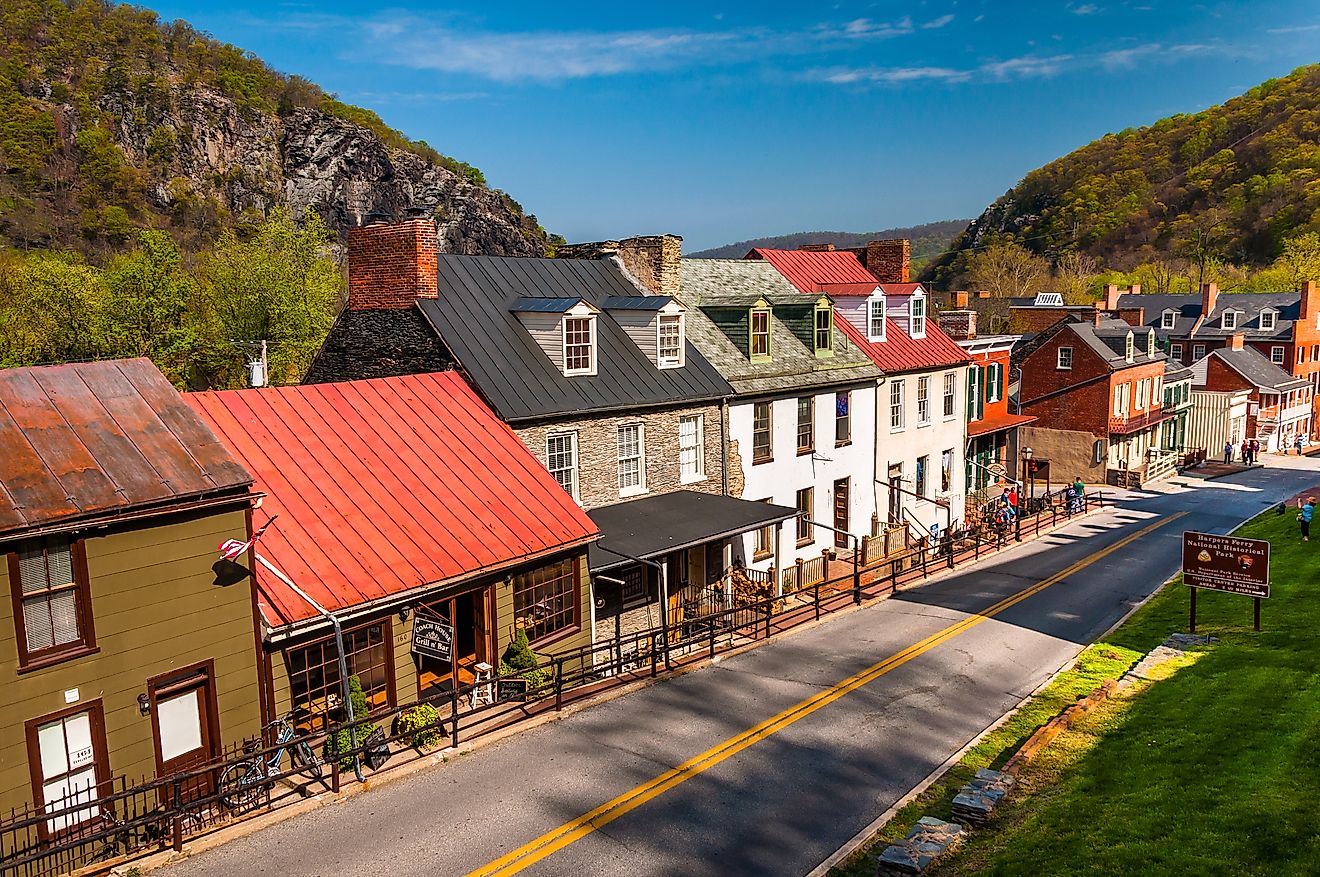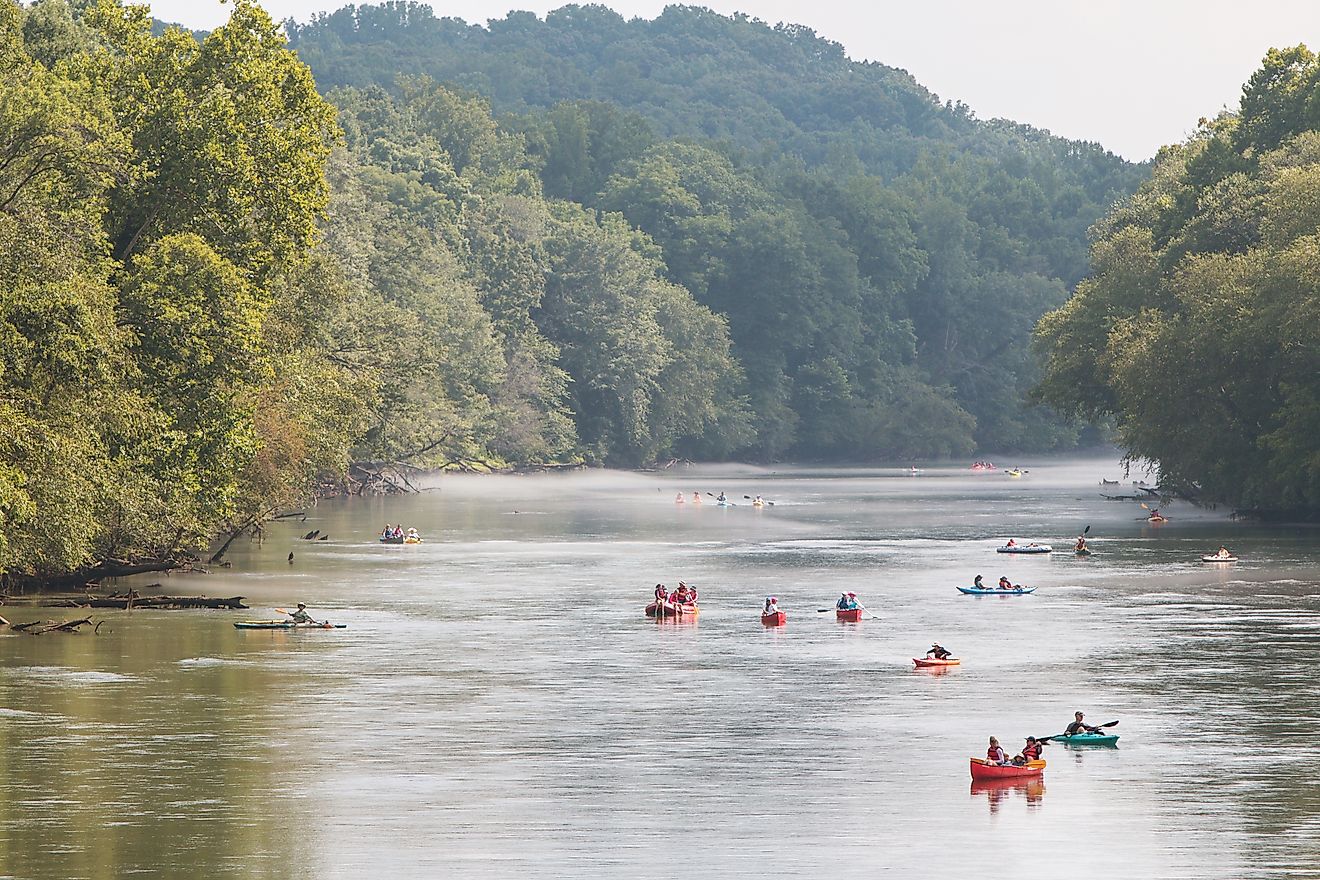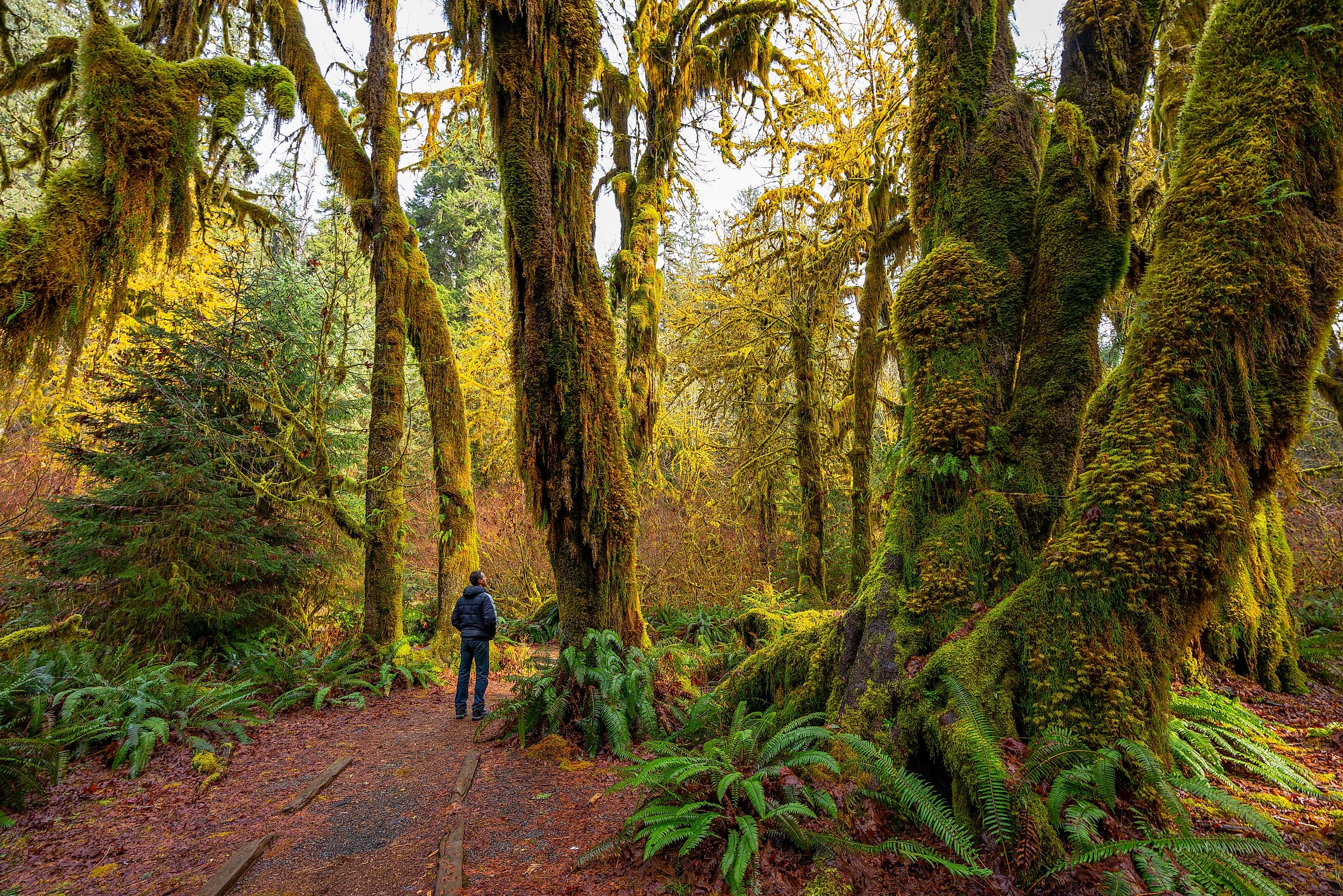
Rainforests in the US You Didn't Know Existed
When you think of rainforests, you might imagine the Amazon Basin or steamy jungles in Southeast Asia. But hidden in the unlikeliest corners of the United States are rainforests that defy expectations. These lush, misty ecosystems thrive from Alaska to Puerto Rico, cloaked in mystery, drenched in rainfall, and brimming with biodiversity.
Welcome to America’s secret rainforests—the ones few travelers know exist but are spectacular in their own right. From the moss-draped valleys of the Pacific Northwest to the tropical canopies of the Caribbean, here are the US rainforests that belong on your must-visit list.
Hoh Rain Forest, Washington
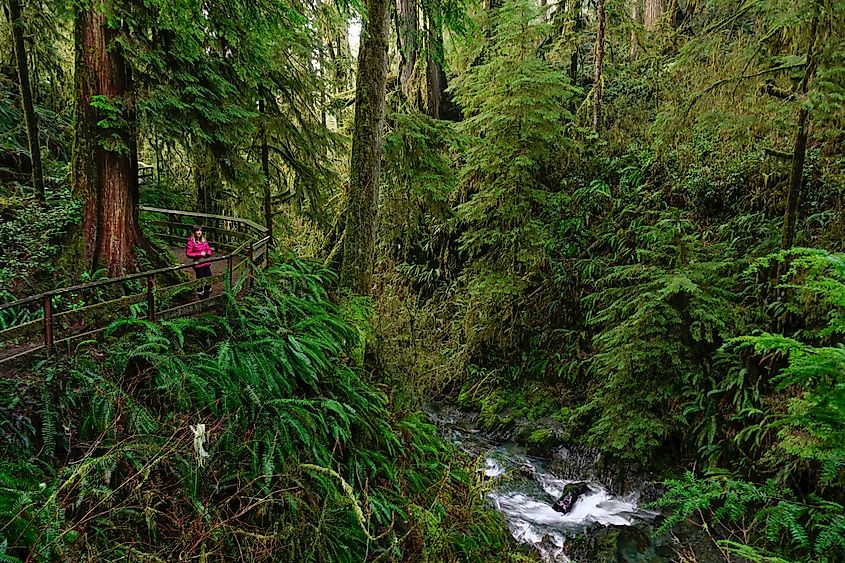
Type: Temperate Rainforest
Rainfall: 140+ inches annually
Tucked into the western edge of the Olympic Peninsula, Olympic National Forest is home to the lush Hoh Rain Forest—arguably the most famous temperate rainforest in the United States. But there’s much more to this region than meets the eye.
The Hoh Rain Forest is a cathedral of green, where massive Sitka spruces, western hemlocks, and bigleaf maples tower over a dense carpet of ferns. Thick moss hangs from the branches like nature’s own chandeliers. The forest receives more than 140 inches of rain each year, much of it from Pacific storms that slam into the peninsula and get trapped by the Olympic Mountains.
Wildlife thrives here—Roosevelt elk roam freely, banana slugs slide across the forest floor, and barred owls call through the fog. Hiking trails such as the Hall of Mosses and Hoh River Trail guide visitors into the heart of the rainforest, where time slows and silence reigns.
Beyond the Hoh, other rainforested valleys like the Queets and Quinault also offer immersive experiences. These lesser-known areas feel even more remote, with fewer visitors and just as much lush beauty. The Quinault Rain Forest, often called the "Valley of the Rain Forest Giants," is home to some of the largest trees in the world.
Tongass National Forest, Alaska
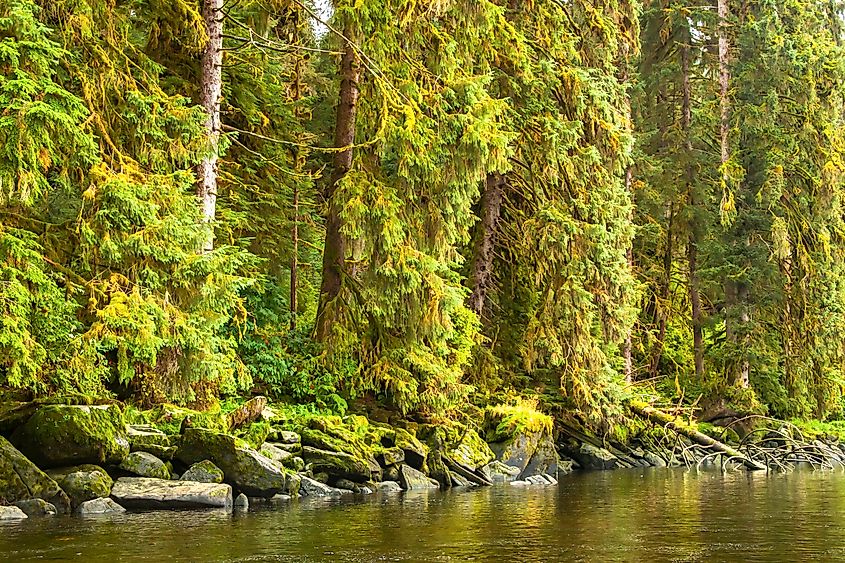
Type: Temperate Rainforest
Rainfall: 100–200 inches annually
Sprawling across Southeast Alaska, the Tongass is the largest national forest in the US and one of the most expansive temperate rainforests on Earth. This ecosystem stretches over 16.7 million acres and encompasses islands, fjords, glaciers, and vast tracts of old-growth forest.
Here, massive conifers—Sitka spruce, western red cedar, and hemlock—form dense stands, while mosses and lichens blanket nearly every surface. Bald eagles soar above salmon-filled rivers, and brown bears prowl the shoreline during the summer salmon runs. It’s an untamed wilderness that feels truly primeval.
Many visitors arrive via cruise ships or ferries on the Alaska Marine Highway. Popular stops like Juneau, Ketchikan, and Sitka offer easy access to rainforest hikes, wildlife tours, and glacier exploration. But for the full experience, head to remote corners of the forest like Admiralty Island or the Misty Fjords National Monument.
In these wild corners, you’ll find a different pace of life. Indigenous communities maintain traditional ties to the land, fishing, carving, and storytelling. Exploring these areas offers not just a natural experience but a cultural one as well.
Chugach National Forest, Alaska
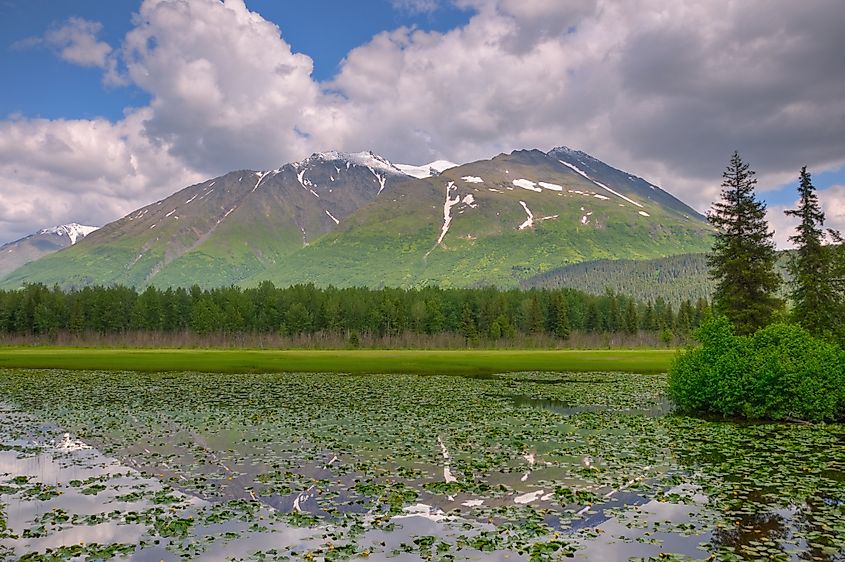
Type: Temperate Rainforest
Rainfall: 150+ inches in some areas
Located east of Anchorage, the Chugach National Forest is often overshadowed by its more famous neighbor, the Tongass. But this 5.4-million-acre forest is a hidden gem. With ecosystems ranging from rugged coastline to glacier-fed valleys, Chugach also boasts vast stretches of coastal temperate rainforest.
In areas like Prince William Sound and the Kenai Peninsula, the forest bursts with life. Rain-drenched slopes support towering spruce and hemlock trees, while sea otters, moose, and bears traverse the land and sea. Puffins and bald eagles dot the skies.
Chugach offers an abundance of activities: kayaking among icebergs, hiking alpine trails, fishing for salmon, or cruising through fjords. The region is also an outdoor classroom for understanding how temperate rainforests function in colder climates.
Birdwatchers especially love Chugach for its diversity. The forest is part of the Pacific Flyway, a major migratory route. During certain seasons, it hosts an impressive variety of songbirds, seabirds, and raptors.
Caribbean National Forest (El Yunque), Puerto Rico
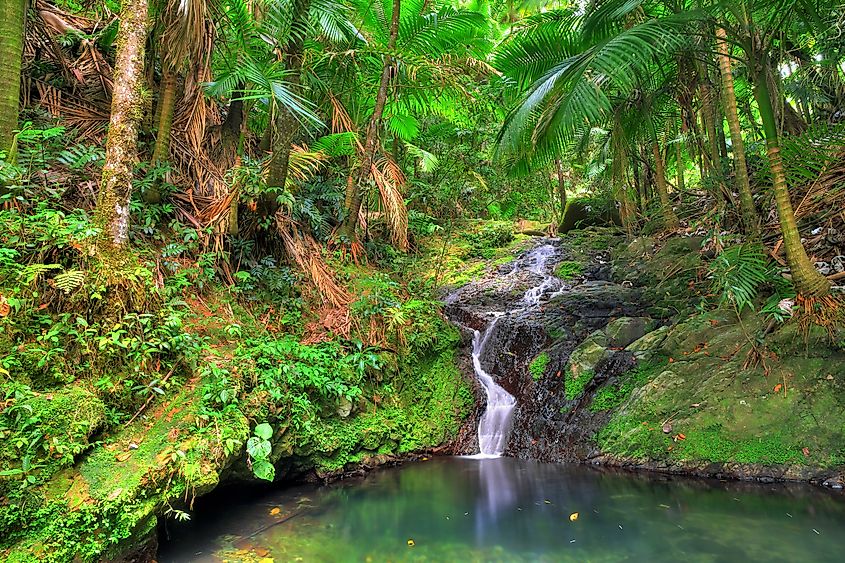
Type: Tropical Rainforest
Rainfall: 120+ inches annually
El Yunque, located in northeastern Puerto Rico, is the only tropical rainforest in the US National Forest System—and it feels like another world. Within just 29,000 acres, El Yunque packs an astonishing range of biodiversity and ecological wonder.
Tropical hardwood trees tower over orchids, bromeliads, and vines. Coquí frogs chirp throughout the day and night, and rare birds like the Puerto Rican parrot dart through the canopy. Despite being relatively compact, El Yunque receives over 120 inches of rainfall a year, supporting a humid, lush environment more commonly associated with the equator.
El Yunque is popular for hiking, with trails leading to waterfalls, mountain peaks, and panoramic vistas. The La Mina Falls and Mount Britton Tower are visitor favorites. It’s also easily accessible from San Juan, making it one of the most approachable rainforest experiences in the US.
Local legend and cultural importance run deep in El Yunque. The forest is named after the Taíno word “Yuke,” meaning “white lands,” a reference to its cloud-shrouded peaks. Visitors will find a blend of nature and myth, where ancient spirits are said to dwell among the trees.
Kaua‘i’s Alaka‘i Swamp, Hawai‘i
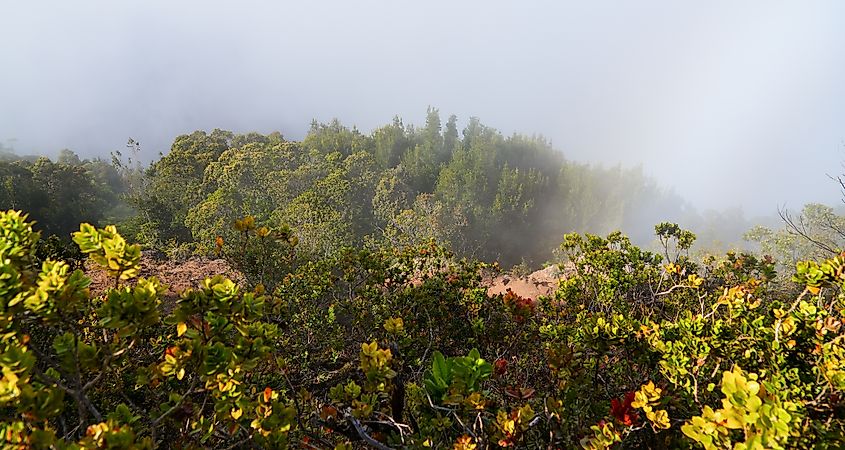
Type: Tropical Montane Rainforest
Rainfall: 150–200+ inches annually
Though not part of the National Forest system, the Alaka‘i Swamp in Hawai‘i deserves mention. This unique high-elevation rainforest, located in the heart of Kaua‘i, is one of the wettest places on Earth. Nearby Mount Wai‘ale‘ale often receives more than 400 inches of rain per year, feeding the swamp’s boggy ecosystem.
The Alaka‘i is home to rare native plants and birds, many of which are found nowhere else. Hiking here is an otherworldly experience—the boardwalk trail passes through cloud forest, upland bog, and thick jungle. The mist is often so thick it feels like you’re walking through a dream.
This is a fragile and protected area, with efforts ongoing to combat invasive species and protect native biodiversity. For those who make the trek, the reward is immersion in one of the rarest ecosystems in the US.
Many of Kaua‘i’s endemic bird species—such as the ‘Akeke‘e and ‘Akikiki—can only be seen here. Conservationists are working hard to preserve these species, making Alaka‘i a vital hub for ecological research and preservation.
Rainforests vs. Other Forests: What Sets Them Apart?
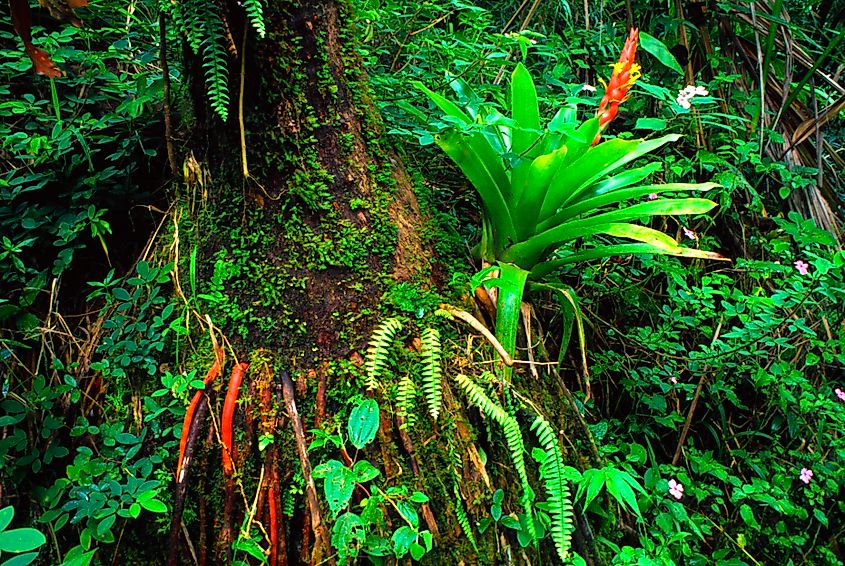
Not all forests are the same. While much of the US is forested, rainforests are unique—and here's why:
Rain, Rain, and More Rain
Rainforests get at least 70 inches of rain a year—often much more. Compare that to 30–40 inches in typical US forests, and you’ll see why places like Washington’s Olympic Peninsula and Hawaii’s Alaka‘i Swamp stand out.
Rich in Life
Rainforests teem with biodiversity. From moss-covered trees to coquí frogs and banana slugs, their ecosystems are far more lush and varied than those of drier forests.
Evergreen Canopies
While deciduous forests lose their leaves, rainforests stay green year-round. Their dense canopies create shady, moist environments where ferns and mosses thrive.
Wet, Thin Soils
Rainforest soils are often shallow and low in nutrients, but constant moisture and decay keep plant life thriving. The air is humid and earthy, unlike the drier, more seasonal feel of other forests.
No Fire Needed
Most US forests rely on fire for renewal—but not rainforests. These ecosystems regenerate through decay, with fallen logs becoming nurseries for new growth.
The Forest Type That Changes Everything
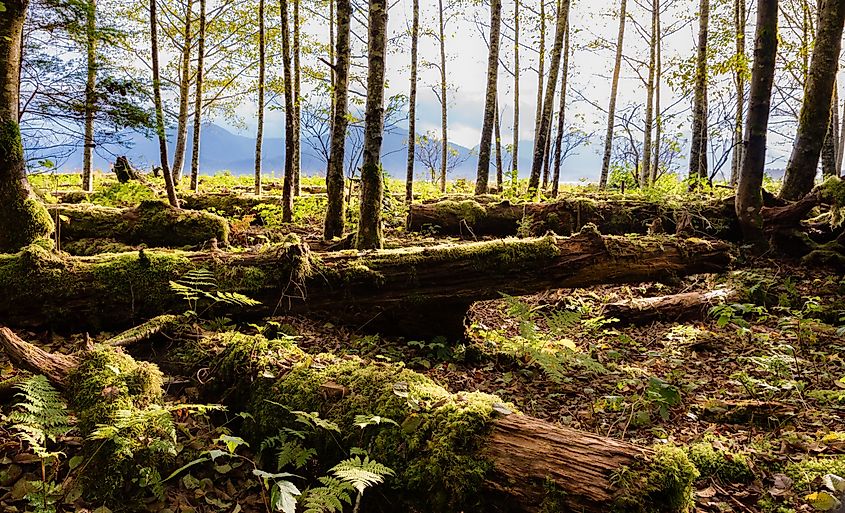
Rainforests in the US are more than just curiosities—they’re crucial parts of our natural heritage. Each one offers a chance to experience nature at its most immersive, whether that’s in the drizzling mist of Alaska or the tropical humidity of Puerto Rico. So next time you plan a national park trip, consider one of these lesser-known rainforests. They just might change the way you see America’s wild side.
These rainforests offer something increasingly rare: true silence, raw beauty, and a sense of connection to the natural world. They are sanctuaries—not just for wildlife, but for the human spirit.
